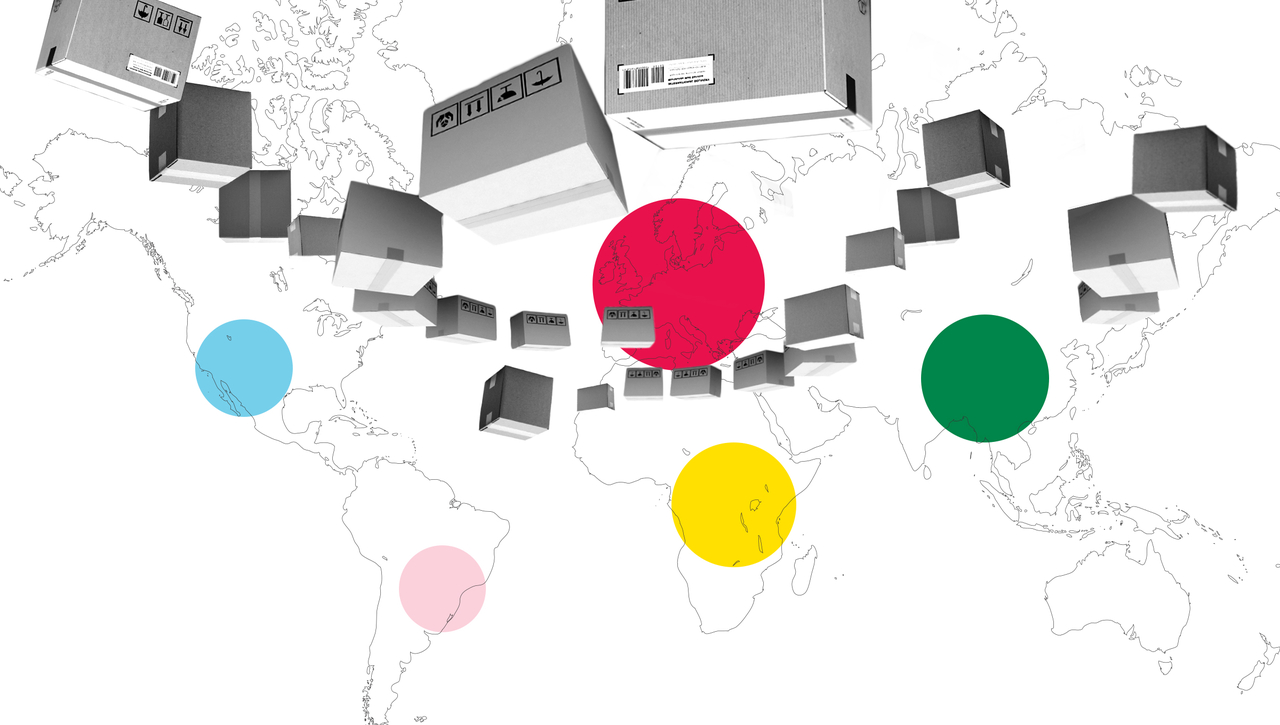Recently, the negotiations over trade agreements have brought people out on to the streets all over Europe. The demonstrations against the Comprehensive Economic and Trade Agreement (CETA) between the EU and Canada, against the Transatlantic Trade and Investment Partnership (TTIP) between the EU and the US, and against the Trade in Services Agreement (TiSA) featured thousands of Europeans angry or worried enough to spend an afternoon in a large and noisy crowd.
The common denominator shared by the various different stakeholders within the anti-globalisation movement at the time was the growing concern over the rising power of multinational corporations.
Europe and the US witnessed similar – although more violent – protests at the turn of this century at the Ministerial Conference of the WTO in Seattle in 1999, at the IMF and World Bank meeting in Washington DC in 2000, and in 2001 at the meeting of the European Council in Gothenburg and at the G8 summit in Genoa. The common denominator shared by the various different stakeholders within the anti-globalisation movement at the time was the growing concern over the rising power of multinational corporations. Then 9/11 happened and the anti-globalisation movement turned into an anti-war movement, while decisions taken by established international organisations such as the WTO or the IMF ceased to make a lot of noise.
Global integration, however, has nevertheless increased substantially ever since and at high speed thanks to technological progress such as the internet or cheap and fast transportation around the globe. When in 2008 the financial crisis hit the US and later the EU, suddenly the negative side-effects of the quiet but quick progression of globalisation surfaced and the losers of globalisation became visible. After that, the story became more complex: since the early rise of the anti-globalisation movement in the mid-1990s, the structure of world trade and globalisation has changed dramatically. While in 1995, when the WTO was founded, trade consisted mainly of end-products and raw materials; in 2017, an estimated 80 per cent of all global trade consists of intermediate goods that are traded as part of a global value chain. This means that at the time of the financial crises, when the downsides of globalisation came to the surface, national economies were already deeply integrated in global value chains, national wealth depending on access to foreign markets and suppliers.
From the initial anti-globalisation movement to the anti-openness movement
As a result of the financial crisis and a new awareness of the risks associated with increasing globalisation, and thanks to internet and social media, the anti-globalisation movement seen in the early days of this century has experienced a revival. While it is difficult to identify a common denominator among the many interest groups linked to the initial anti-globalisation movement today, the main targets of their campaigns are no longer international summits or international organisations, but international trade negotiations.
In a healthy democracy, the constituency will sooner or later put an end to policymaking that disregards the majority’s opinion.
Initiated by interest groups and political parties linked with socialist views, the protests against the new trade deals recently spread to interest groups and political parties linked with nationalist views. In sum, trade negotiations and the resulting trade agreements today lack the support of a considerable share of their constituency. In a healthy democracy, the constituency will sooner or later put an end to policymaking that disregards the majority’s opinion.
So, where do we stand today? There is a growing concern over the lack of adequate regulation of international trade, along with a growing concern over the protection of domestic economic interests in foreign markets, that has led to a number of newly initiated trade negotiations. These negotiations are harshly criticised for various reasons by a large and colourful number of interest groups throughout the West. But are trade agreements indeed the true culprits, the rightful targets of anti-globalisation protests? Probably not, and here’s why.
Causality between trade agreements and unemployment rates remains questionable
Undoubtedly, globalisation alongside technological progress has driven many people out of their jobs. In fact, a famous long-term study on the effects of globalisation on unemployment in the US found that between 1995 and 2010 millions of jobs in the manufacturing industries disappeared. Alarmingly, another longitudinal study showed that the vast majority of the workers previously employed in those sectors did not manage to find a new workplace once they had lost their initial job in the late 1990s. However, both studies also demonstrate that the loss of jobs in the manufacturing industries in the US was not linked with free-trade agreements, but with the overwhelming competition from China.
Global production chains alongside global production optimisation operate on the basis of the multilateral minimum standard as established by the WTO agreements and do not necessarily depend on preferential trade agreements. The negative consequences of globalisation and technological progress for workers in the manufacturing sector of industrialised countries are therefore likely to persist even in the absence of new trade agreements. In fact, new trade agreements may even help dealing with the job-loss in Western manufacturing industries by contributing to job-growth in the sectors benefitting from international trade.
Concerns are increasingly taken into account
While WTO members did not agree to include trade-related international conventions on human rights, environment protection, climate change or labour standards into their legal body, the new trade agreements cover a wide range of “trade-plus” aspects. CETA has chapters on energy, environment, climate change, human rights, biotechnology, animal welfare and labour standards, which are mostly binding. The Transpacific Partnership (TPP) for instance, would have forced Vietnam to finally ratify the core labour conventions of the International Labour Organization (ILO) as a condition for participating in the agreement.
The WTO agreements and older trade agreements mainly focus on reducing tariffs and barriers to trade at the border. This can easily be explained with the structure of the global economy at the time of the establishment of the WTO, when countries were trading primarily with endproducts and raw materials. Given that today the nature of global trade has fundamentally shifted to trading in intermediate goods and within global value chains, the highest economic benefits are expected from mutual recognition of standards and a reduction of non-tariff barriers to trade. However, no democratically elected government is likely to be inclined to lower its domestic standards of products and production methods because of a trade agreement – possibly also because of the increasing awareness of consumer protection and thanks to the lobbying of interest groups. As a consequence, the new trade agreements cover most of the issues raised in the protests against them.
Trade agreements can be effective legal instruments
In the absence of a trade agreement, the minimum standards of the WTO apply to trade more or less globally. Because of the fundamental shift in the nature of global trade in the last decade however, this minimum standard only covers a fraction of the actual trade issues of today’s global market, leaving a considerable legal vacuum in which multinational corporations can operate. At the same time, efforts to establish enforceable international standards in the protection of the environment, animal and plant welfare or climate change are stalled or have failed. Thus, manufacturers in countries with low levels of protection for the environment, the climate, animals and human rights may indeed lawfully engage in actions considered unlawful elsewhere.
Possibly you do not want to have such products on your domestic market. However, protectionism is not a meaningful – or lawful – option, since you need to protect your own economic interests when it comes to access to foreign markets, which runs counter to protectionist policies. Trade agreements are a powerful legal instrument for protecting domestic standards and for enforcing international standards in trade-related aspects such as the environment and human rights, and they are a lawful instrument for influencing the kind of products entering a market and effectively being bought by one’s own consumers. As long as multilateral negotiations on these issues are stalled, international trade agreements remain the second-best option to effectively taking into account the concerns raised by interest groups and political parties while not risking economic isolation.
Related to this is the concern that the new substantial trade agreements will foster a race to the bottom with regard to standards. Interestingly, the most recent studies suggest that the direction of the race is effectively predetermined by regulatory means: a relevant standard set for the quality of the final product is likely to trigger a race to the bottom of labour conditions, environmental protection and other standards, since competitors will aim to achieve the required quality at the cheapest price.
A relevant standard set at the level of the production method, however, is more likely to lead to a race to the top – if well designed – since high-standard production methods normally should lead to a high quality endproduct while limiting the scope of competitors to push the boundaries of labour, environmental and other standards. Competitors have, thus, an incentive to promote their product on the basis of their particularly high standard throughout the entire production process. While a country may require a certain product quality on its market (which can also be supervised) independent of trade agreements, it is substantially more challenging to enforce a minimum standard with regard to production methods in the absence of a trade agreement.
So far not limiting national sovereignty
International trade agreements are effectively contract law: simplified, this means that with the exception of the minimum requirements established by WTO law and a number of fundamental international obligations in human rights law, partner states are essentially free to cover anything they agree on in their trade agreement. In addition, a trade agreement can be terminated any time by any one of the partner states. Trade law is furthermore traditionally based on consensus, meaning that decisions can only be taken unanimously. From a strictly legal perspective, trade agreements are therefore unlikely to infringe upon national sovereignty.
Obviously, inequalities in market size, technical knowledge, experience and economic power have an impact on the strength of positions in trade negotiations. This, however, should rightfully be of concern for developing countries and emerging markets, but there is no current knowledge of any evidence that suggests that the EU (or any European non-EU country for that matter) has been pushed to sign an undesired and damaging agreement. On the other hand, the ratification process of mixed agreements within the EU may indeed feature aspects of the above-mentioned power dynamics: it will essentially be very difficult for an individual EU member state to block the ratification of an EU-wide trade agreement. Arguably, however, the potential implications for national sovereignty are embedded in the institutional structure of the EU and not part of the trade agreement itself.
With regard to concerns over national sovereignty, it should not be forgotten why initially substantial trade agreements came to life: alongside other international institutions, the GATT (General Agreement on Tariffs and Trade) treaty was established in the aftermath of the Second World War as a measure to prevent another war on a global scale. The EU was soon thereafter established following the very same logic. Over the years, strong trade relations have proven to be an efficient instrument for guaranteeing stability in international relations and in preventing the ultimate violation of national sovereignty – war – from happening (again).
Complexity and the challenge of transparency
The CETA agreement, potentially the new gold standard of substantial trade agreements, covers over 1600 pages of legal text. Being an ambitious, groundbreaking agreement, CETA attempts to reduce non-tariff barriers between Canada and the EU while maintaining a high level of respective domestic standards. Even for experts it is truly challenging to fully grasp the regulatory, political and economic implications of all aspects of CETA. Normally, experts and trade negotiators specialise in individual regulatory fields – services, the internet, labour migration or technical regulation, for instance – and the overall assessment of the details of a trade deal like CETA will therefore depend on individual expertise in each chapter.
Why has it become this complex? Again, this is a direct consequence of the nature of global trade today, and of the ambition of new trade agreements to substantially regulate all relevant aspects of today’s trade. If we would all trust our negotiators and our experts to be competent, impartial and to have our best interests at heart, complexity would not necessarily be an issue. However, negative experiences of the past have fostered doubts and mistrust against state institutions, multinational corporations and experts. Therewith the field is open for campaigning against such complex trade deals on the basis of shady or alternative facts.
As a consequence of public campaigning, the EU now pursues an entirely new transparency policy before and during trade negotiations, and the amount of information available on EU trade negotiations today is unprecedented worldwide. Nevertheless, distrust towards trade negotiations and misinformation on their content in the EU constituencies persists, and public campaigning for more transparency in trade negotiations continues. Arguably, the challenge cannot be overcome as long as mistrust against state officials and experts is on the rise. Nevertheless, proactive information, education and proactive engagement with civil society alongside more responsible campaigning and lobbying will in the long run help increasing the ability of constituencies to distinguish between facts and propaganda regarding the implications of trade agreements.
A good time for innovators
This is not a good time for perfectionists. Truths are being tested, facts disregarded and the fate of entire countries rests on a razors’ edge. The old rules are no longer adequate for the challenges of our time and in a politically and economically insecure environment there may be little time left for experiments. Who can tell what the perfect trade agreement should look like? Who knows how the perfect trade negotiations should be structured? Since we are setting foot on new ground on so many levels these days, it may be overly ambitious to seek perfection.
It is time now to distribute the benefits more evenly and to secure the well-being of our planet on behalf of our children’s children.
However, this is a time for innovators. Trade policy is open to new approaches and unconventional methods. In the big picture, the entire world has benefitted tremendously from globalisation and technological progress. It is time now to distribute the benefits more evenly and to secure the well-being of our planet on behalf of our children’s children. There are good reasons to believe in the ability of humankind to learn from its past mistakes – indeed the campaigning against and on behalf of mega-regional trade agreements carries this spark, as do the many new approaches to trade policy that we can witness now around the globe. The journey is certainly not perfect, but – and that’s a big but – we are indeed on the way to refine the rules of globalisation.




























Other articles
Share these too.